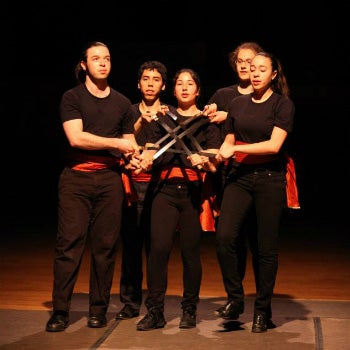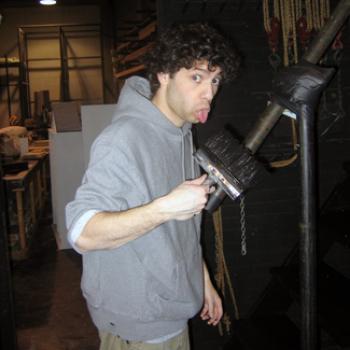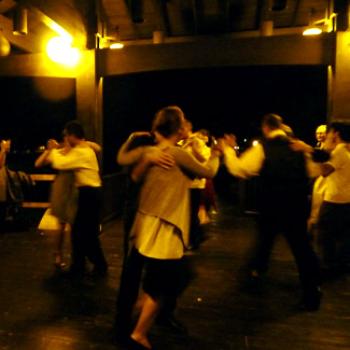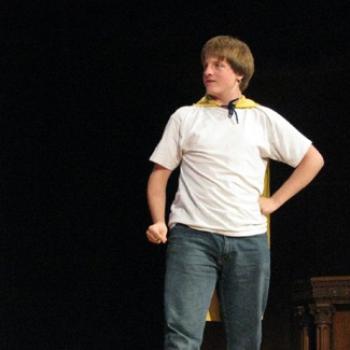On merging dance lives
Molly Gorin ’16
“I never thought I would be able to put a rapper dance side by side with a contemporary duet, but here I am today.”

As long as I can remember I’ve belonged to two distinctly different dance worlds:
1) The world of classical and contemporary performance dance; the alternately competitive and nurturing world of serious dancers, choreographers, artists, and athletes alike. This is an atypical world but certainly a mainstream one, full of bun-heads who had been on pointe since the third trimester, and modern dancers with strong legs and serious opinions.
2) The very different world of folk dance. My parents met at a contra dance, granting me the self-coined status of “pure blood” (a la Harry Potter), and it wasn’t until sometime in elementary school that I realized a crowded dance hall and lively fiddle music was not everyone’s weekend family outing. In case you don’t live under a rock, contra dancing is a type of American social dance; think halfway between square dancing and that floaty party dance in Jane Austen movies, but less hokey and less elegant, respectively. The people who do it tend to do it a lot, but it’s a very small segment of the population.
Oh, and there’s one once a month at Oberlin.
But I’ll get to that.
As well as contra dancing, in seventh grade I joined New Moon, a teen rapper team that my sister started. Rapper is a kind of sword dance, originally from England, done with flexible metal swords with handles on both sides. It is very fast, in jig time, and involves a variety of figures in which a set of five dancers are connected by the swords and walk, spin, and jump to form complicated shapes and exciting knots. My mother is on Half Moon, New York’s women’s sword dance team. I ended up leading New Moon team all through high school once my sister graduated; you could say it runs in the family. Yet, until college, my “normal” dance friends had no idea what I was up to.
It’s not as though I was ashamed or actively trying to keep my dance worlds separate--at least that was what I told myself. It was just that it never seemed as though my normal world would appreciate my folk world. I convinced myself that, though I loved and looked forward to rapper practices, performances, competitions, conventions, and so on, the girls with whom I took modern and ballet would simply never understand. And so, though many of my outside friends knew I had some other hobby (Is it like hip hop? they would ask. Fencing?) I never invited them to look it up, much less come to a performance.
Among my folk dancing family friends, a good fifty percent had gone to Oberlin, were enrolled at Oberlin, had a family member at Oberlin, or would go to Oberlin sometime soon. The school’s folk dance and music scene was famous in our community, and no small part of why decided to apply early decision after just one visit. One of the alumni I knew had created the first Oberlin rapper team. The summer before my freshman year I talked to him about restarting the team when I arrived, and he bequeathed me the team’s old swords with all the honor of an old knight sending a new one off to battle. When I asked him if he thought that there would be enough people there who were interested he answered:
“It’s like this: In Oberlin, when you want to do something, you stick your head out the door and say, ‘Hey I have a weird idea,’ and then you’ll have twenty volunteers in the next half hour.”
So when I came to Oberlin and helped to start a new team, I had high hopes but also the assumption that I would maintain the same distance between the team and the rest of my life as I had before. For the first year I did. I took dance classes in the college and participated in student choreography in the Student Dance Showcase and the Fall Forward and Spring Back dance concerts. Then on Sunday afternoons I met up with my rapper team. But throughout my freshman and sophomore years the team was growing, and it was getting hard to keep it private. We started performing at co-ops and events, and we went away to a national competition. I started wanting my friends to see us in action.
When one of our members suggested we put a piece in the Student Dance Showcase I put up little defense. I didn’t want to stop a great team from a fun opportunity, but as the dates of the show grew nearer I grew more and more nervous. What would everyone think? Would they understand what was going on? How could they?
I won’t say that I felt fine the instant we started performing. Rapper is usually performed in loud, cramped pubs. I couldn’t get over my nerves as we performed under bright lights to an eerily silent room, feeling a hundred eyes upon us as we stepped and jumped and tried to stay in time with the fiddles that, at the corner of the huge space, felt frighteningly far away.
No, I didn’t feel fine until later. After both performances were over, perhaps a week later, I was walking across campus when a girl I recognized only by sight stopped me.
“Yo, I don’t know what that was, but that pirate dance was frickin’ awesome.”
She didn’t say frickin’.
Oberlin is as a place where people embrace the different and the unexpected. It is a place where all facets of your life can come together in a cheerful collage that you place in front of everyone you know and say, Here, this is me, all of me, what do you think? I never thought I would be able to put a rapper dance side by side with a contemporary duet, but here I am today and you know what? I think we’ll do it again next semester.
Tags:
You may also like

On the energy of the arts at Oberlin
“This is Oberlin at its best. The constant performance, observation, and absorption of art in all its various forms. Oberlin is a place where art and creativity thrive, as long as there are students...
Adam Kander ’07

On learning tango
“Nothing is as awkward as the first class of Argentine tango. Take two very nervous strangers, both aware of their mutual ignorance of dancing, make them stand chest-to-chest and hold each other, and...
Amy Hess ’12

On there being too much to do at Oberlin
“I always thought I was good at time management, but handling five classes, three plays, two student organizations, an RA job, a radio show, and a social life as an Oberlin sophomore is a little like...
Ben Ferber ’11